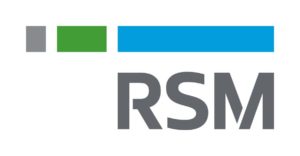Op-Ed: The printer, a vulnerable point for cyber attacks

** Paid advertorial **
Companies are increasingly exposed to losses due to the increasing sophistication of cyber attacks and the emergence of internal threats. Companies face a dilemma to balance productivity with the need for privacy and security.
One area of the IT ecosystem that is often overlooked is the printing infrastructure. Most organizations rely on printing to support critical business processes, which means they can be the gateway to valuable, confidential and sensitive information.
Security threats are no longer limited to personal computers, servers or networks. As reported by Kaspersky, in 2018 there was a series of cyber attacks mounted through networked printers. In one notable incident, a hacker targeted 50,000 printers and had them print a message supporting a YouTuber called PewDiePie.
In this context, it is not surprising that security in printing environments is becoming a major concern for corporate customers. Fifty-nine percent of companies globally reported that they had data loss related to printing in the last year. Therefore, it is key that companies become more aware of their safety.
Your printing devices are vulnerable
As printing devices increase their intelligence and connectivity and become true information terminals, potential threats also grow, which may include: Malicious access through networks, management and alteration of information through the network, data that is filtered from the storage media, unauthorized access through the operation panel, inappropriate access through fax telephone lines, leakage of information through a printed copy or violations of the security policy due carelessly.
Factors to take into account for a holistic security in printing:
1) Device security: Companies must ensure that their devices have security capabilities to protect devices against potential threats, such as compromise of firmware, hard drive, non-volatile memory, open network ports and the system of authentication.
On the other hand, if a multifunctional or integrated printer software, also known as firmware, is altered or compromised, that device can be used as a method of intrusion into the corporate network, as a means to damage the device or as a platform for other malicious purposes. The designed devices are created using a Trusted Platform Module (TPM) only from Ricoh and are designed to not start if the firmware has been compromised.
2) Data security: It is easy to lose information accidentally. A document left in a printer’s tray can become a security risk as easy as a misused digital file or the impact of a human error. You have to protect the data whether you print, copy, scan or send faxes with a good cryptographic encryption module that helps protect your data both when you are in transit and when you are at rest.
The process of digitizing paper documents and routing the resulting electronic files, either to back up systems or by email, can be a compromise point for the data if it is not adequately secured. Scanning processes, although designed to be easy for users, should also offer strong protection for routed digital information. This starts with the access restriction. It is optimal to limit scanning operations to authorized users only with several authentication options, including through network login or single sign-on through the card.
3) Network Security: Multifunction printers exchange critical information with computers and servers through networks. If they are left unprotected, this information is at risk of being altered by those with malicious intentions that enter the networks. It is important to guard against unauthorized access including encryption of network communications and print flows including network user authentication and multiple administrative countermeasures, such as closing network ports and managing proactive devices.
In addition, Ricoh device administrators can easily block unnecessary network ports, which helps make the devices virtually “invisible” to hacking. Also, specific protocols, such as SNMP or FTP, can be completely deactivated to eliminate the risk of being exploited.
As the data moves through the network, it is possible for an expert hacker to intercept raw data streams, files and passwords. Without protection, intelligible information can be stolen, modified or falsified and reinserted into the network with malicious intent. It is important to use robust network security protocols that can also be configured according to the needs of the clients. The Transport Layer Security (TLS) protocol is used to help maintain the integrity of data that is communicated between two endpoints.
Don’t forget about end-of-life programs!
The latent information in the removed equipment may present a security risk until it is destroyed. If compromised, malicious third parties could use the information acquired for a greater security breach. It is very important to clean the information about the equipment at the end of its useful life or when they are returned at the end of a lease or rental agreement.
Ricoh is certified for a wide range of products based on Common Criteria (ISO / IEC 15408) where safety functions are tested by independent external laboratories licensed by the government to ensure that the safety features work correctly and conform to standards established both by the government and by the industry.
In conclusion, simply hoping that they do not attack you cannot be the answer. Carefully evaluate the Ricoh Solutions portfolio, its technology, experience, commitment and local service in matters of print security.
Our devices are designed, manufactured and implemented with safety as a basic requirement. Safety-centered thinking is present from the beginning in everything from product design to sales.
It’s in our DNA.











